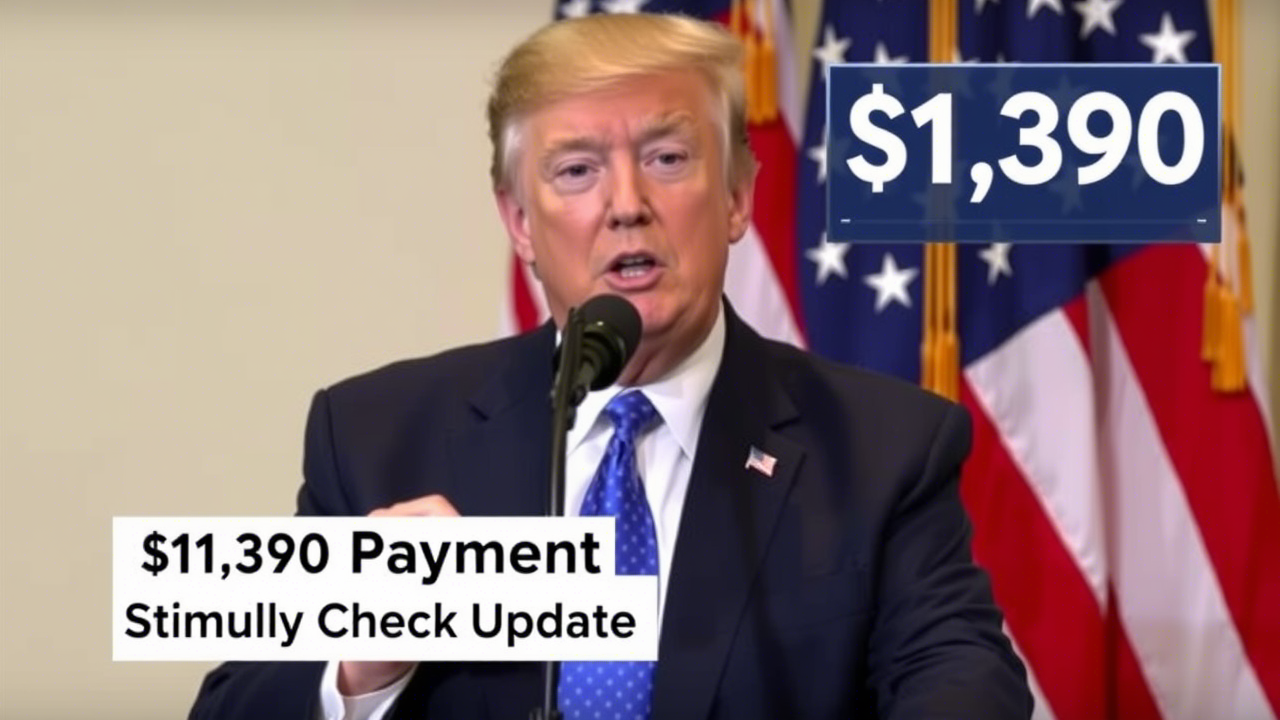Stimulus Check 2025 Update: With inflation continuing to squeeze household budgets, the news of a $1,390 stimulus check in 2025 is a welcome relief for millions of Americans. Designed to ease the burden of rising costs for essentials like groceries, gas, and rent, this one-time federal relief payment promises to provide a financial lifeline. Whether you’re a retiree, a single parent, or someone living paycheck to paycheck, this stimulus could make a real difference. Let’s dive into the details—who qualifies, when the money will arrive, and how you can ensure you don’t miss out.
What Is the $1,390 Stimulus Payment?
The 2025 stimulus payment is a federal initiative aimed at supporting Americans grappling with economic challenges. Modeled after previous Economic Impact Payments, this $1,390 check is tailored to today’s financial climate, where inflation and high living costs continue to strain wallets. Unlike recurring payments, this is a one-time payout, intended to cover immediate needs like utility bills, groceries, or medical expenses. The best part? It’s tax-free and, for most, requires no application.
Key Features of the Stimulus
- Payment Amount: $1,390 one-time direct payment
- Eligibility: Based on income, tax status, and federal benefits
- Release Date: Expected mid-2025 (exact date TBD)
- Disbursement: Direct deposit, paper check, or EIP debit card
- Taxable?: No, fully tax-free
- Application: Only required for non-filers or new beneficiaries
Who Qualifies for the $1,390 Relief Check?
Eligibility for the stimulus check hinges on income levels and benefit status, targeting low- and middle-income households. Here’s a breakdown of who qualifies:
- Single Filers: Annual income up to $75,000
- Married Couples Filing Jointly: Combined income up to $150,000
- Heads of Household: Income up to $112,500
- Benefit Recipients: Social Security (SSDI, SSI, retirement), VA, and Railroad Retirement beneficiaries
- Families with Dependents: May receive additional funds for qualifying children or dependents
If you’ve received stimulus payments in the past, you’re likely eligible again, especially if your income hasn’t changed significantly. According to the IRS, over 80% of eligible households from previous rounds will automatically qualify.
Special Considerations
Non-filers, such as those not required to submit tax returns, can use the IRS’s Non-Filer Tool to claim the payment. Beneficiaries of federal programs like Social Security or VA benefits are typically enrolled automatically, making the process seamless for many.
When and How Will the Payment Be Delivered?
The IRS plans to roll out payments starting in mid-2025, likely around summer, though the exact timeline is still under wraps. The delivery method depends on your existing records with the IRS:
- Direct Deposit: The fastest option for those with bank details on file.
- Paper Checks: Mailed to your address if no bank information is available.
- EIP Debit Cards: Some recipients may receive prepaid cards, as seen in prior stimulus rounds.
To track your payment, the IRS will update its “Get My Payment” tool closer to the release date. Keeping your contact and banking details updated with the IRS is crucial to avoid delays.
Pro Tip: Avoid Scams
Beware of scammers posing as IRS agents. The IRS will never call, text, or email you requesting personal information. Always verify information through the official IRS website.
How to Check Your Eligibility
Wondering if you’ll get the $1,390 check? Here are simple steps to confirm:
- Visit the IRS Website: Look for the “Get My Payment” or “Check Eligibility” tool, expected to be updated in 2025.
- Review Your Tax Records: Recent tax filers are automatically assessed based on their latest return.
- Check Benefit Status: Social Security, SSDI, SSI, and VA recipients are typically pre-qualified.
For non-filers, the IRS’s Non-Filer Tool will be available to submit basic information, ensuring you’re in the system.
Will the Payment Affect Your Taxes or Benefits?
Good news: the $1,390 stimulus check is completely tax-free and won’t count as income on your next tax return. It also won’t impact eligibility for federal programs like Medicaid, SNAP, or housing assistance. This design ensures the payment provides maximum relief without unintended consequences.
How Should You Use the Stimulus Money?
There are no restrictions on how you can spend the $1,390, but the government encourages using it for essential expenses. Here are some practical ideas:
- Cover Essential Bills: Pay rent, utilities, or medical expenses.
- Stock Up on Groceries: Ease the strain of rising food costs.
- Reduce Debt: Clear credit card balances or late fees.
- Support Dependents: Cover childcare or school-related costs.
For example, with grocery prices up 11% on average since 2023 (according to USDA data), this payment could cover a month’s worth of food for a small family.
What’s the Public Saying?
The announcement has sparked hope across the U.S., especially among:
- Retirees: Those on fixed incomes struggling with healthcare costs.
- Single Parents: Families juggling childcare and household expenses.
- People with Disabilities: Individuals facing high medical bills.
Social media platforms like X show widespread support, with users sharing how previous stimulus checks helped them avoid eviction or cover unexpected expenses. One user posted, “This $1,390 could mean keeping the lights on for another month—huge relief!”
Could There Be More Stimulus Payments?
While the $1,390 payment is a one-time deal, future relief depends on the economy. If inflation spikes or recession fears grow, analysts suggest additional rounds could be on the table. The government is closely monitoring job data and consumer spending, which will shape decisions in late 2025.
Final Thoughts: Don’t Miss Out
The 2025 stimulus payment is a critical opportunity for millions to ease financial stress. Whether you’re paying off bills or saving for a rainy day, this $1,390 check could be a game-changer. Stay proactive—check your eligibility, update your IRS records, and keep an eye on official updates. In a world where every dollar counts, this relief could be the boost you need to stay afloat.
